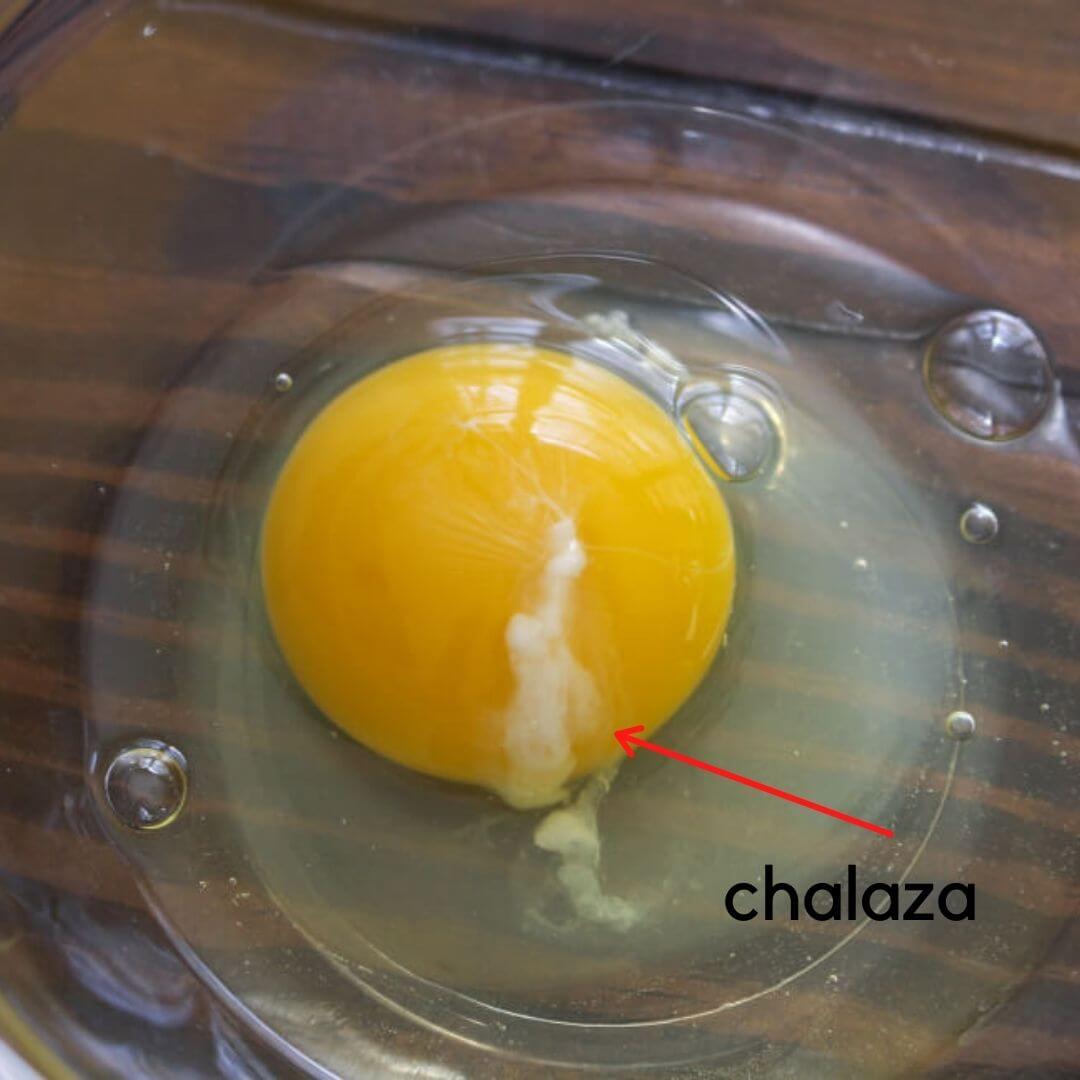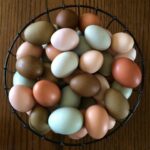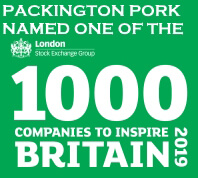Egg Common Misconceptions
Eggs are one of the best, and most affordable, sources of complete protein there is. They are full vitamins and nutrients, including Vitamin D and lutein. But eggs are also the subject of various myths that simply aren’t true. So today, we’re going to debunk some of the most common misconceptions and get to the bottom with some chicken & egg truths.
Myth 1 – Brown Eggs are healthier than white:
Up until the 1970’s white eggs were popular in the UK, and used to be the norm, and still are in the US, but in the late 1970’s shoppers switched to brown eggs under the misconception that they were a more natural, rustic, healthier choice. Brown foods are usually healthier for you, for example wholemeal bread, pasta etc are significantly more nutritious than their white counterparts. However, this comparison stops when it comes to eggs.
The reality is that the nutritional value of an egg is dependent on the diet of the chicken and the freshness of the egg. Hens with more access to sunlight lay eggs that contain more vitamin D, making free-range eggs higher in vitamin content. Hens fed a diet rich in omega-3 fatty acids will produce eggs that contain much higher levels of omega-3 fatty acids. It has nothing to do with shell colour.
All eggs are high in protein and relatively low in cholesterol making them a healthy choice when eaten as part of a balanced diet.
Myth 2 – You must wash all eggs:
In the UK, we don’t wash Grade A hen eggs because the process is thought to “aid the transfer of harmful bacteria like salmonella from the outside to the inside of the egg.” They do not need washing, a freshly laid egg has a shell covered in a protective ‘bloom’, called the cuticle, and this acts as an antibacterial defence system.
Myth 3 – White eggs are white because they’re bleached:
Many people believe that white eggs are bleached, but this is not the case. White eggs are laid by chickens that don’t produce any pigment as the egg passes through their oviduct – they just come out like that.
Eggs sold in the USA – both brown and white – are washed prior to packaging, but the process does not involve bleach. Instead, they are cleaned with warm water and mild detergent before being thoroughly dried . We don’t wash eggs in the UK.
Myth 4 – White and brown eggs are very different:
While diet and lifestyle can make slight differences to eggshell colour, the real deciding factor in colour is genetics. Certain breeds will lay eggs with darker shells, while others will lay eggs with lighter shells, and others will even lay eggs with a greenish-blue hue. But the only difference between these eggs of a different colour is the pigment in the shell.
Myth 5 – White chickens lay white eggs and brown chickens brown eggs:
It’s a common misconception that the colour of a bird’s feathers influences the colour of the eggs that they lay. The truth is feather colour has no relation to eggshell colour.
Myth 6 – You can only get white or brown eggs:
There are in fact an array of egg colours from white to chocolate brown, with blue, green and even pinks in between. All of which the hens lay naturally and depend on the breed and diet of the chicken.
| Egg Colour | Best Breed for Colour |
|---|---|
| White | Most Mediterranean breeds lay white eggs, but the most prolific of them all is White Leghorn. The white variety may be a bit flighty for small homesteads, but her sister bird (the Brown Leghorn) is easier to manage, a lot calmer to deal with and lays almost as many eggs. |
| Blue | The Cream Legbar is the best layer of blue eggs. She is a cross between the Leghorn, Cambar, Barred Rock and Araucana. She also happens to be an auto-sexing bird, which means you can sex the chicks at birth. |
| Chocolate Brown | Many people like the really dark (chocolate) eggs of the Black Copper Maran. Although those deep coloured eggs are beautiful to look at, they do come at a price. Buying good quality stock is expensive. |
| Brown | Depending on the shade of brown you want, you have a huge selection of breeds. If you are looking for a mid-brown egg then the Rhode Island Red is perfect. |
| Green | The Isbar is your best chance to get green eggs. The depth of green colouration will depend on the quality and genetics of the bird. While some do lay a deep moss green others can lay anywhere from a light to khaki coloured egg. |
| Plum | Croad Langshans are the only breed known to lay plum coloured eggs on a relatively consistent basis (the quality of the colour will depend upon the parentage). |
| Pink | Pink eggs can be a matter of perception as we already mentioned. To some folks the egg may appear to be a light tint to others it will appear as a light pink. Orpingtons are your best bet for consistently pink coloured eggs. |
Myth 7 – You should remove the ‘stringy’ part of an egg as it’s an imperfection:
 Chalaza (kuh-LAY-zee) is the ropey strands of egg white which anchor the yolk in place in the centre of the thick white. There are two chalaza anchoring each yolk, on opposite ends of the egg. They are neither imperfections nor beginning embryos. The more prominent the chalazae, the fresher the egg. You do not need to remove Chalaza, it doesn’t interfere with the cooking or beating of the white.
Chalaza (kuh-LAY-zee) is the ropey strands of egg white which anchor the yolk in place in the centre of the thick white. There are two chalaza anchoring each yolk, on opposite ends of the egg. They are neither imperfections nor beginning embryos. The more prominent the chalazae, the fresher the egg. You do not need to remove Chalaza, it doesn’t interfere with the cooking or beating of the white.
Myth 8 – Eggs are bad for you
Somewhere along the line, eggs got a bad rap, and many people think you shouldn’t eat them. This myth is simply untrue and harmful to those trying to follow a balanced diet. Eggs are an excellent source of nutrients and you should include them regularly in your diet, not avoided. Specifically, eggs contain 13 essential vitamins and minerals, making them a great choice for those of all ages trying to eat well.
Packington Eggs
We’ve taken great care in selecting our breed of white hen, they perfect for our sustainable and free-range approach to farming;
- They taste delicious, with a beautiful deep golden yolk.
- You’re helping the planet a little – how egg-citing!
- The hens are free to roam and feed on pasture producing eggs that are healthier for you!
- This breed of hen is more productive than their brown feathered friends.
- They have a smaller frame, meaning their appetite isn’t as large, so the carbon emissions to produce their feed is much less.
All contributing to a lower environmental impact and delivering a lower carbon footprint, which fits with our environmentally considered approach – and of course the white eggs they produce look and taste great!
The best choice?
The best choice as a consumer you can make, is to buy Free-range hen eggs. Free-range will be clearly labelled on the packaging, and the number that’s printed on the egg will be number 1. Our Patshull White Hens lay their eggs in mobile housing nestled amongst woodland on the idyllic Patshull Estate, making them the perfect choice.
We’re incredibly passionate about the environment we work in and believe it’s vital to ensure it’s available for future generations. Above all we believe in sustainable farming, animal welfare, and want our customers to not only have the best product, but trust in our company.
If you want to buy our tasty white eggs, please contact your local Packington supplier. If you’re interested in stocking our eggs, please email sales@packingtonfreerange.co.uk. They are also available on Ocado
You can read more about our Eggs here on our website.











